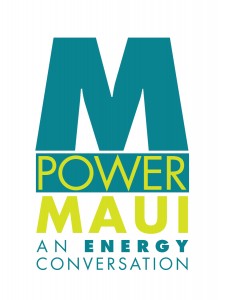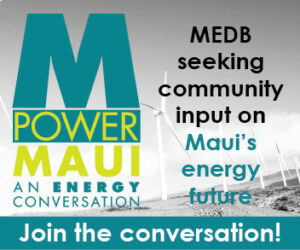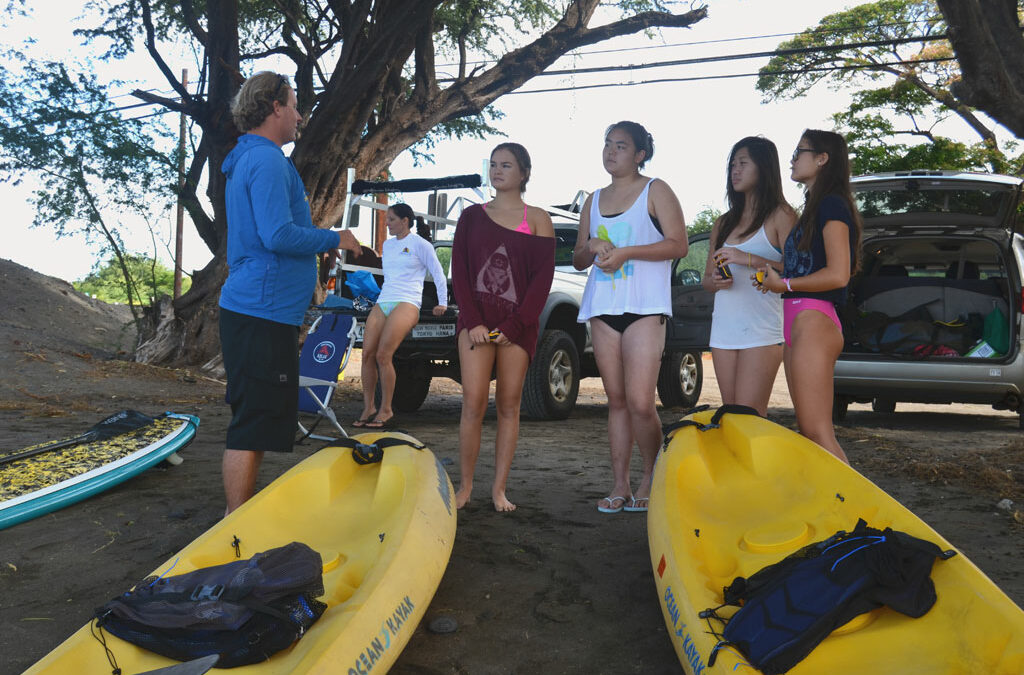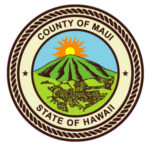Mar 11, 2015 | Environment, Events, Sustainability
 Experts from across the nation will present the latest trends in the electric utility industry, as well as the public policy influencing customer choices. Sessions will address issues about advancing toward grid modernization, consumer protection, and engaging customers in a fresh, new way.
Experts from across the nation will present the latest trends in the electric utility industry, as well as the public policy influencing customer choices. Sessions will address issues about advancing toward grid modernization, consumer protection, and engaging customers in a fresh, new way.
Conference sessions include
- Understanding the evolving role of the customer in a broader context
- The customer of the 21st century
- Are we seeing what they’re seeing: customer perceptions on energy
- Advancing toward grid modernization – meeting customer needs
- The growth of distribution generation – good or bad for the customer?
- Community perspectives (video panel discussion)
- How can the customer become an active participant in the energy landscape
- The changing regulatory compact – the customer, the utility, the regulator
- Consumer protection – who’s looking out for the customer?
Keynote speakers include
- Eric Gleason, President, NextEra Energy Transmission, LLC
- Deborah Kimberly, Vice President, Customer Energy Solutions, Austin Energy
- Constance Lau, Chairman and Chief Executive Officer, Hawaiian Electric Industries, Inc.
- Alan Oshima, President and Chief Executive Officer, Hawaiian Electric Company
- Luis Salaveria, Director, Department of Business, Economic Development and Tourism, State of Hawaii
- Mark Toney, Executive Director, The Utility Reform Network (TURN)
For details on how to register and more information about the conference, visit MauiEnergyConference.com
Presented by the Mayor’s Office of Economic Development and the Maui Economic Development Board.

Feb 18, 2015 | Environment, Sustainability
Only 11 days remaining!
 Share your priorities and values about energy on Maui – today and in the future – as part of a project called “MPowerMaui: An Energy Conversation”.
Share your priorities and values about energy on Maui – today and in the future – as part of a project called “MPowerMaui: An Energy Conversation”.
Sign up and participate in small group sessions during the month of February. These 90-minute sessions are designed to be engaging, interesting, and informative.
You will learn more about energy, think about your own actions related to energy, prioritize issues, consider what actions you would or would not support, and develop messages for decision makers. The results of these MPowerMaui conversations will be presented at the “Maui Energy Conference” to be held on March 25-26, 2015 and shared with decision makers.
We invite you to either host a session at your home, company or organization by bringing together 12-16 individuals and a MEDB representative will run the session … or sign up for a session that MEDB organizes.
For more information and to sign up to participate, please call 875-2336.
The MPowerMaui project is presented by the Maui Economic Development Board with sponsorship from the County of Maui Mayor’s Office of Economic Development; State Department of Business, Economic Development & Tourism (DBEDT) Energy Office; and the UH Hawaii Natural Energy Institute (HNEI).

Feb 4, 2015 | Community, Environment, Sustainability
Join the conversation!
 Share your priorities and values about energy on Maui – today and in the future – as part of a project called “MPowerMaui: An Energy Conversation”.
Share your priorities and values about energy on Maui – today and in the future – as part of a project called “MPowerMaui: An Energy Conversation”.
Sign up and participate in small group sessions during the month of February. These 90-minute sessions are designed to be engaging, interesting, and informative.
You will learn more about energy, think about your own actions related to energy, prioritize issues, consider what actions you would or would not support, and develop messages for decision makers. The results of these MPowerMaui conversations will be presented at the “Maui Energy Conference” to be held on March 25-26, 2015 and reported to the community.
We invite you to either host a session at your home, company or organization by bringing together 12-16 individuals and a MEDB representative will run the session … or sign up for a session that MEDB organizes.
For more information and to sign up to participate, please call 875-2336.
The MPowerMaui project is presented by the Maui Economic Development Board with sponsorship from the County of Maui Mayor’s Office of Economic Development; State Department of Business, Economic Development & Tourism (DBEDT) Energy Office; and the UH Hawaii Natural Energy Institute (HNEI).

Jan 28, 2015 | Education, Environment, Sustainability
 A coral reef monitoring project sounded like it could be fun for the Wailuku Roselani Na Hokulani 4-H Club. Member Kaitlyn Yamada says it was fun, but more importantly she and her fellow 4-Hers were able to master their skills in Google Earth applications as well the Global Positioning and Geographic Information Systems. They also learned the importance of a healthy coral reef. “This project allowed us to become aware of the balance between development and possible jobs and sustainable and green living in Maui County,” Yamada said. “When we began this project, we thought it was a fun idea, but later learned of the significance of gathering and understanding this data.”
A coral reef monitoring project sounded like it could be fun for the Wailuku Roselani Na Hokulani 4-H Club. Member Kaitlyn Yamada says it was fun, but more importantly she and her fellow 4-Hers were able to master their skills in Google Earth applications as well the Global Positioning and Geographic Information Systems. They also learned the importance of a healthy coral reef. “This project allowed us to become aware of the balance between development and possible jobs and sustainable and green living in Maui County,” Yamada said. “When we began this project, we thought it was a fun idea, but later learned of the significance of gathering and understanding this data.”
A Ke Alahele Education Fund Grant administered by Maui Economic Development Board provided the 4-H Club camera and computer equipment they needed to create coral reef maps at Olowalu and Maalaea. Their task was to establish the baseline reef conditions by teaming up on paddle boards and video taping conditions with GoPro cameras. On shore, the eight club members in grades 8 to 10 tracked their findings on a computer funded by Ke Alahele. Coral reefs worldwide are declining due to various stressors including ocean acidification, sedimentation, over-fishing and near-shore development, according to the club’s grant application. “We were inspired to think of all of the factors that could affect the health of our coral reef. We learned the importance of coral reefs to the health of our island concerns,” Yamada said.
The club’s 4-H leader, Joyce Yamada, said she saw the girls apply skills in science, technology, engineering and math. “STEM skills are integrated in every job and industry. Our members need to be prepared for, and aware of, these opportunities as they become productive members of our community,” Joyce Yamada said. “The confidence that they build as they master these skills will allow our girls to believe in their abilities and become our next generation of inventors, scientists, engineers and members of a community that cares for their environment.”

Jan 21, 2015 | Environment, Events, Sustainability

With island consumers paying more than double the national average per kilowatt hour for electricity, the second Maui Energy Conference + Exhibition comes at a time when Hawaii is seeing a revolutionary shift to renewable energy resources. The conference, presented by the County of Maui in partnership with Maui Economic Development Board, will be held March 25-27 at the Maui Arts & Cultural Center. The event is expected to draw individuals and businesses from across the state and the country.
At the inaugural 2014 conference, more than 200 recognized policy makers from state and federal government and the private sector gathered to talk candidly about the country’s changing energy landscape and its implications for power utilities and consumers. This time around, the 2015 event promises to explore the evolving role of the electric utility through the lens of the customer. Nationally recognized experts have been invited to speak about emerging trends in the electric utility industry and public policy shaping customer choices including customer engagement programs, distributed generation, microgrids, demand-response programs and renewables integration.
NextEra Energy Transmission President Eric Gleason and HECO President and CEO Alan Oshima have been tapped to give keynote remarks on the opening day of the conference. Hawaiian Electric and the Florida-based NextEra Energy announced a $4.3 billion merger late last year. The conference will also feature multiple sessions with a variety of panelists talking about a range of subjects from meeting the customer’s needs to both self-generate and manage electricity usage to protecting consumers in the new energy/customer choice paradigm. The conference is also offering sponsorship opportunities for companies and exhibit spaces for public and private groups to display products and services. An optional Maui Sustainability Mobile Workshop featuring the Smart Grid Demonstration Project, JumpSmartMaui, will be held on the final day of the conference. Conference fee is $395 prior to Feb. 15; $495 after Feb. 15; and $525 on site. The fee covers admittance to general sessions, exhibit venue, networking exhibit reception, continental breakfast and lunch for two days, and conference materials.
For more information, please visit MauiEnergyConference.com
Oct 22, 2014 | Community, Environment, Sustainability
 Maui Smart Grid volunteers wrapped up their participation in a pilot project that led many to become more energy efficient. “I really wanted to get a good handle on my family’s energy use and bring down, if possible, our electricity bills. I got that by participating in the Maui Smart Grid Project,” said Maria Drey, one of 66 Maui Meadows residents who participated in the two-year project.
Maui Smart Grid volunteers wrapped up their participation in a pilot project that led many to become more energy efficient. “I really wanted to get a good handle on my family’s energy use and bring down, if possible, our electricity bills. I got that by participating in the Maui Smart Grid Project,” said Maria Drey, one of 66 Maui Meadows residents who participated in the two-year project.
The Maui Smart Grid project aimed to help volunteers monitor their home power use, sometimes in real time, and make adjustments for efficient and cost-effective use of electricity. With the help of one smart meter on property, Drey said her family kept track of their energy consumption and made changes accordingly. They invested in an energy-efficient system for their pool and were more prudent with lights and appliances. Meanwhile, volunteer Alfred Wolf monitored his electric usage to “get a more precise feel for how energy is used and generated at my place.” For Wolf and Thomas Croly, volunteering for Maui Smart Grid meant they could contribute toward the state’s efforts to reach the Hawaii Clean Energy Initiative goals. “I hope Maui Electric Co. will gain information from the Maui Smart Grid project to help distribute energy more efficiently,” Croly said.
The project was co-led by the Hawaii Natural Energy Institute at the University of Hawaii at Manoa and Maui Electric Co. Maui Economic Development Board partnered to engage with the community and project volunteers. The project’s findings will be sent to the U.S. Department of Energy, and shared with industry looking at best uses of technological tools for energy efficiency, according to Leon Roose, principal and chief technologist of GridSTART at Hawaii Natural Energy Institute. “We found on average, people did change their behavior and reduced their energy consumption as a result of having more information on energy use and through tips and awareness made possible through home energy audits,” Roose said.

Oct 15, 2014 | Community, Environment, Sustainability
 Maui County students in kindergarten through 12th grade are invited to submit art designs to beautify the island’s JUMPSmartMaui Fast-Charger stations. “This is a chance for Maui’s talented students to shine and jump-start their creative juices by coming up with some original designs for our island’s JUMPSmart electric vehicle charging stations,” said Jeanne Skog, President and Chief Executive Officer of Maui Economic Development Board.
Maui County students in kindergarten through 12th grade are invited to submit art designs to beautify the island’s JUMPSmartMaui Fast-Charger stations. “This is a chance for Maui’s talented students to shine and jump-start their creative juices by coming up with some original designs for our island’s JUMPSmart electric vehicle charging stations,” said Jeanne Skog, President and Chief Executive Officer of Maui Economic Development Board.
MEDB and Hitachi are sponsoring the student art contest. Judges will look for entries with an original design that positively represents Maui’s community, the environment and clean energy. The EV chargers are an important component of the JUMPSmartMaui demonstration project, which seeks to incorporate renewable energy, smart grid technologies and electric vehicle solutions to achieve a clean future for Maui County. NEDO, Japan’s largest public research and development management organization, is investing $30 million in the project.
The winner’s artwork will be displayed on existing and upcoming JUMPSmartMaui fast charger stations on Maui Island. An example of winning artwork already installed can be found at the Queen Kaahumanu Center station. Currently, stations are located at the Kaanapali Beach Hotel, Maui Tropical Plantation, Maalaea Triangle (Maui Ocean Center) and Piilani Village Shopping Center. New locations will be at the Pukalani Shopping Center and Long’s in Kulamalu Pukalani. More than a dozen other stations are being planned. Artwork can be created in digital media or using crayon, color pencil and/or paints. Only 2-dimensional art will be accepted. For art contest rules and guidelines, go to www.medb.org Deadline for submissions is 4:30 p.m., Friday, Oct. 31. Application forms are available at the JUMPSmartMaui Innovation Center at the Queen Kaahumanu Center or MEDB at 1305 North Holopono Street, Suite 1, in the Maui Research & Technology Park in Kihei. For more information, contact Lalaine Pasion at MEDB: lalaine@medb.org, (808) 875-2341.

Jun 25, 2014 | Community, Environment, Sustainability

A new brewery is nearing completion in Kihei. Owned and operated by husband and wife, Garrett and Melanie Marrero, Maui Brewing Co.’s newest venture represents a response to their business’ growing demand. The Marreros founded their company almost 10 years ago and today operate a seven-barrel brewpub in Kahana and a 25-barrel production brewery and canning facility in Lahaina. Come this fall, Maui Brewing Co. will close its Lahaina brewery and open a new 42,000-square-foot facility in Kihei on 5.3 acres in the Maui Research & Technology Park, right next to Maui Economic Development Board’s offices.
“Our business is very multi-faceted,” Garrett Marrero said. “What we have shown and demonstrated is that you can be a successful manufacturing business in Hawaii,” Marrero said. The company’s BrewPub in Lahaina will remain open and together with the new brewery in Kihei, Maui Brewing Co.’s staff will grow from 59 employees today to approximately 140 when the brewery and a new Kihei brewpub opens. “When you manufacture a product truly local, our entire community succeeds,” he said. Aside from the brewery, the Kihei location will also house a distillery, a tasting room and eventually a BrewPub. “People want to support local. They want to support something that’s authentic to the islands,” Morrero said as he explained Maui Brewing Co.’s success. Maui Brewing Co. beers are sold in 11 states and four countries.
Maui Brewing Co. describes itself as a “truly Hawaiian brewery.” The company has been recognized as Hawaii’s No. 1 craft beer producer since 2005. Beers are packaged in eco-friendly materials with cans manufactured on Oahu and designed by local Maui artists. The cans, according to Maui Brewing Co., have the added bonus of better protecting the beer from both light and oxygen damage which can compromise the taste. A unique, recyclable plastic carrying device is used to hold the cans. The spent grain from beer production is donated to local ranchers for cattle feed and composting.

Jun 18, 2014 | Environment, Sustainability
 Baldwin High School student Chelsea Kau got up close and personal with marine life on a recent Maui Youth Alliance excursion to visit the Waihee Beach Park with Department of Land and Natural Resources staff and learn about ocean safety. The best part of the visit “was when I got to cut a hole in a fish to feel for the cavity in its belly, and then suture the fish,” the 15-year-old Wailuku resident said.
Baldwin High School student Chelsea Kau got up close and personal with marine life on a recent Maui Youth Alliance excursion to visit the Waihee Beach Park with Department of Land and Natural Resources staff and learn about ocean safety. The best part of the visit “was when I got to cut a hole in a fish to feel for the cavity in its belly, and then suture the fish,” the 15-year-old Wailuku resident said.
Kau said she gained an appreciation of the impact humans are having on the ocean and its sea life. Overfishing may be one of the biggest problems contributing to fewer fish in the ocean, she said. “But, it’s also because of these other land factors such as sewage pumps and humans stepping on the coral reefs, etcetera. But the only thing that can be controlled right now, is the overfishing.” Kau, who has participated in the Youth Alliance for two years, advocated for diving and fishing for subsistence only. “That’s the way it should be, because you don’t need 10 or 15 fish for a family of three or four,” she said. “Take what you need.” After visiting marine resource officials, Kau said she believes shark attacks are “more than likely” caused by debris that has floated to the Hawaiian Islands from the earthquake and tsunami that devastated Japan on March 11, 2011.
Kau said she believes ocean safety is a challenge: “It’s ‘something you can’t control’ as ‘Mother Nature is unpredictable.’ But because we have lifeguards and all of the land emergency services, they’re saving the lives of people who don’t know our currents and tides,” she said. Youth Alliance members attend monthly events during the school year to explore and gain a greater understanding of key components in the Maui community. The Maui Economic Development Board coordinates the group’s gatherings.
 Experts from across the nation will present the latest trends in the electric utility industry, as well as the public policy influencing customer choices. Sessions will address issues about advancing toward grid modernization, consumer protection, and engaging customers in a fresh, new way.
Experts from across the nation will present the latest trends in the electric utility industry, as well as the public policy influencing customer choices. Sessions will address issues about advancing toward grid modernization, consumer protection, and engaging customers in a fresh, new way.

 Share your priorities and values about energy on Maui – today and in the future – as part of a project called “MPowerMaui: An Energy Conversation”.
Share your priorities and values about energy on Maui – today and in the future – as part of a project called “MPowerMaui: An Energy Conversation”.
 A coral reef monitoring project sounded like it could be fun for the Wailuku Roselani Na Hokulani 4-H Club. Member Kaitlyn Yamada says it was fun, but more importantly she and her fellow 4-Hers were able to master their skills in Google Earth applications as well the Global Positioning and Geographic Information Systems. They also learned the importance of a healthy coral reef. “This project allowed us to become aware of the balance between development and possible jobs and sustainable and green living in Maui County,” Yamada said. “When we began this project, we thought it was a fun idea, but later learned of the significance of gathering and understanding this data.”
A coral reef monitoring project sounded like it could be fun for the Wailuku Roselani Na Hokulani 4-H Club. Member Kaitlyn Yamada says it was fun, but more importantly she and her fellow 4-Hers were able to master their skills in Google Earth applications as well the Global Positioning and Geographic Information Systems. They also learned the importance of a healthy coral reef. “This project allowed us to become aware of the balance between development and possible jobs and sustainable and green living in Maui County,” Yamada said. “When we began this project, we thought it was a fun idea, but later learned of the significance of gathering and understanding this data.”




